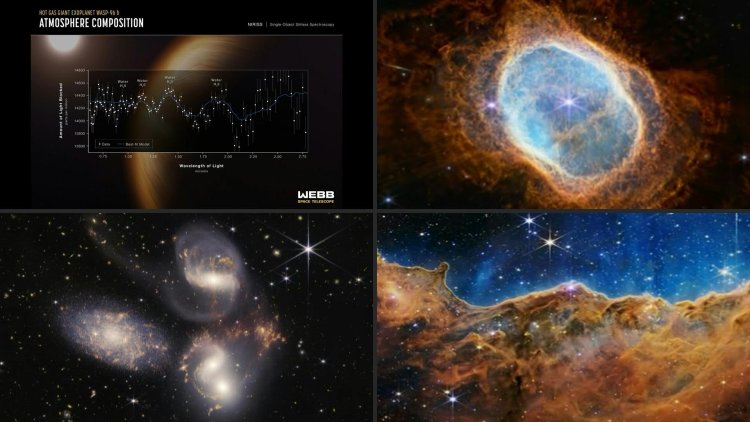Webb begins new era of astronomy

The cosmic cliffs of a stellar nursery, a quintet of galaxies bound in a celestial dance: the James Webb Space Telescope released its next wave of images Tuesday, heralding a new era of astronomy.
Released one by one, the new images demonstrated the full power of the $10 billion observatory, which uses infrared cameras to gaze into the distant universe in unprecedented clarity.
On Monday, Webb revealed the clearest image to date of the early universe, going back 13 billion years.
The latest tranche included the "mountains" and "valleys" of a star-forming region called NGC 3324 in the Carina Nebula, dubbed the "Cosmic Cliffs," 7,600 light years away.
Webb also revealed never before seen details of Stephan's Quintet.
The telescope dramatically captures shockwaves as one of the galaxies smashes through the centre of the cluster.
A dim star at the centre of the Southern Ring Nebula was revealed for the first time to be cloaked in dust, as it spews out rings of gas and dust in its death throes.
The telescope also found water vapour in the atmosphere of a faraway gas planet. The spectroscopy -- an analysis of light that reveals detailed information -- was of planet WASP-96 b, which was discovered in 2014. Nearly 1,150 light-years from Earth, WASP-96 b.















